

In the Resect Distal Femur dialog box, the yellow disc is visualizing the actual cutting block position. Alternatively, fibular strut grafting may be used to provide anterior column support. If the pin is too posterior, the tape will loosen in terminal extension and flexion. In children with appropriate surgical indications, bipolar release (with or without Z-plasty lengthening) is carried out. At least one pin is placed from anteromedial to posterolateral and one is placed from anterolateral to posteromedial. Kirschner wires provide provisional fixation, and a plate is contoured to the superior calcaneus, behind the posterior facet. Surgical landmarks include the anterior and posterior walls, dome, and medial wall "teardrop. Tibial tubercle realignment procedures should be avoided in skeletally immature patients with open growth plates because of the risk of creating iatrogenic genu recurvatum from growth arrest. They may offer additional information on accompanying lesions on labrum or cartilage or the extent and stage of a femoral head necrosis. Fractures of the proximal radial head and neck in children with emphasis on those that involve the articular cartilage. Care is taken not to overstretch the hamstrings, especially in the first 2 or 3 weeks, for fear of causing sciatic nerve palsy, particularly in individuals with severe contractures. The cordlike gracilis and semitendinosus tendons are identified on its deep surface. Antibiotic-impregnated cement may be advisable for certain high-risk groups of patients. Care must be taken to evaluate other possible sources of injury about the hip as well as associated ipsilateral injury. Evaluation of deep venous thrombosis prophylaxis in low-risk patients undergoing total knee arthroplasty. Dangers Medial pedicular breaches endanger the dural sac, especially on the concavity of the curve. Bulk allografts heal to living host bone, and allograft bone away from this healed junction remains non-viable over the long term. If more visualization is needed, this incision can be extended medially or laterally based on displacement, but this is rarely necessary. The surgical exposure of vertebra is limited up to the intended level of fusion to prevent unintentional inclusion of the adjacent level in the fusion mass. Such deficiencies occur secondary to previous surgery with laminectomies for tumors or the treatment of neural axis abnormalities. This must be performed after an arthrogram of the knee is obtained, which allows exact visualization of the overlapped posterior femoral condyles in the lateral fluoroscopic view. If the reduction cannot be assessed easily, a small drop of contrast can be added in the acetabulum, and then the hip is reduced. Beneath the conus, the lumbar and sacral nerve roots are arranged to form the cauda equina. The gluteus maximus is carefully split, with concurrent meticulous ligation of perforating arterioles. Closed reduction is indicated when Pavlik harness treatment has failed, and when presentation for treatment is delayed past 6 months of age. Unlike fully porous-coated cylindrical stems, underreaming the femoral canal by 0. Depending on the approach and the extent of the dissection, hip precautions should be implemented for 6 to 12 weeks.
Syndromes

After closed manipulation of the fracture in plantarflexion, the talar neck fracture may reduce. Hip abductor strength may indicate abductor weakness, trochanteric bursitis, abductor avulsion, trochanter fracture, or a loose femoral component. Modular femoral heads with the option of plus and minus sizes allow the surgeon to lengthen or shorten the femoral neck, affecting both leg length and offset. Complications of cemented long-stem hip arthroplasties in metastatic bone disease. Treatment of combined posterior cruciate ligament and posterolateral injuries of the knee. Accurate prediction of angular correction after physeal bar resection is not possible, making it very difficult to know with certainty the degree of osteotomy angular correction to perform. When accurately diagnosed, however, patients with these injuries can generally expect full recovery and return to activity with minimal long-term implications. Quadriceps graft management Care must be taken not to detach the quadriceps graft from the patella completely. Then the full-width wedge block is pinned into place according to the technique for the system being used. I prefer to position the patient prone, on a sterile bump, and access the fracture through the posteromedial approach. The term torticollis comes from the Latin words tortus (twisted) and collum (neck). Subperiosteal exposure of the fibula is then developed using a Cobb elevator or right-angle, and retractors are placed around the fibula to protect the soft tissues. Because of this iatrogenic risk with limited corrective options, this procedure should be abandoned. As with many surgeries, the learning curve is high, and the surgeon should be prepared for the consequences. Medical and subspecialty consultations should be obtained before operation if the patient has any history of medical comorbidities. Scar tissue is dissected out from underneath the extensor mechanism using a knife, scissors, or electrocautery. The stance and swing phases of each cycle are separated by the dashed vertical lines. This is facilitated by placement of the foot on a padded stand with the hip in internal rotation during exposure. Pin drilled retrograde from proximal until distal end of pin is buried in the epiphysis. Intuitively, the patient should be supine if other surgery is to be performed on the foot and ankle. The 5-cm insertion frequently needs to be partially or completely released to gain exposure or correct leg length. Some of the perimeter plates have a small extension to pull this fragment into place. The Steinmann pin can be replaced later in the case, and the mark on the femur provides a reference for assessment of change in leg length. We have found the Lauge-Hansen mechanistic classification derived for adults is very useful, as this aids in conceptualizing the reduction technique by reversing the fracture pattern. Initially a curved retractor is placed anteriorly, retracting the proximal femur out of the view of the acetabulum. Drill guides are provided for placement of the pelvic limbs as well as the impactor and pusher for the rod. Future natural history studies will add substantially to improved understanding of these disorders. In extreme cases with osteochondral damage, osteochondral allografting can be attempted. Bolsters underneath the chest and anterior superior iliac spines prevent abdominal compression and allow epidural venous return, thus decreasing epidural bleeding during spinal surgery.
Any anterior or posterior osteochondral fragments are reduced and provisionally fixed with small, smooth Kirschner wires. Asymmetry is abnormal and may indicate a hip dislocation or a congenital short femur. Inferior pedicular breaches endanger the nerve root, especially in the lumbar spine. Blade position is now determined by that point and the designated correction angel relative to the planned osteotomy. In this way, even very lateral and posterolateral offset alterations can be removed. Laterally, very dense cortical bone along the proximal neck presents an excellent extra-articular location for advancing a second interfragmentary screw. Open reduction and internal fixation for supracondylar humerus fractures in children. The subperiosteal dissection is the same, as are placement strategies of either hooks or pedicle screws for anchors. Once the trials have been inserted and appropriate fit has been achieved, the final augment is gently impacted into place. Proximally, the incision curves to follow the contour of the iliac crest but is distal to it. Distal radius physeal fractures are quite common, yet subsequent premature physeal bar formation is relatively rare. Placement of the osteotomy below the tibial tubercle will also avoid pulling the patella distally during distraction. Open growth plates at the ends of the tibia preclude standard adult treatment options such as solid interlocked nails. Routine reaspiration for culture is of limited value, as periprosthetic antibiotic levels are often still above minimum inhibitory concentrations at 3 months. Introduction of pedicle finder into facet joint, taking care to avoid canal penetration. For this reason the crouch gait pattern is not sustainable, and by the late teenage or young adult years individuals with this gait pattern frequently lose the ability to ambulate. The adductor brevis is identified with its overlying anterior branch of the obturator nerve. Placement of the pad more inferiorly causes occlusion or compromise of the femoral vessels in the opposite limb, which may go unrecognized. Once that is done, the gluteus medius, greater trochanter, and vastus lateralis are clearly visualized. It is recommended that the chisel be introduced only until it has obtained some purchase. By 2020, traffic injuries will increase from a current 9th position to 3rd disability-adjusted life years lost. An initial rough cut of the femoral neck can be performed in line with appropriate preoperative templating. Galeazzi procedure the hamstring tendon is passed retrograde through the patellar tunnel using a Huysten suture passer or a guide pin with an eyelet. During the fragmentation stage, the height of the lateral pillar of the femoral epiphysis correlates with outcome and predicts the chance of developing arthritis in adulthood (Table 1). Final fusion is performed near the end of the adolescent growth spurt or when the rods can no longer be lengthened. Arthrotomy can be done without risk of further devascularization of the osteotomized fragment. Tibiocalcaneal fusion Skin closure Carefully ensure that cancellous bone is evident on both the distal end of the tibia and the superior surface of the calcaneus. Because of the pronated position of the foot at injury, however, the medial structures are injured in the early stages. Hip, knee, ankle, and foot orthoses are a time-honored treatment and are used postoperatively in many centers. Placement of a supralaminar hook is difficult without bone removal to allow room for hook insertion. Clinical conditions that constitute good indications for this operative technique are: Mild epiphyseal dysplasia of the femoral head with the lateral part of the head intact Circumscribed anteromedial necrosis or osteochondritis dissecans of the femoral head Valgus head, in particular when the fovea lies within the weight-bearing zone of the hip joint Developmental dysplasia of the hip, when the procedure is performed in conjunction with pelvic osteotomy to obtain better joint congruences Posttraumatic joint incongruence the prerequisite for a successful operative treatment is the possibility that the joint incongruence can be improved.
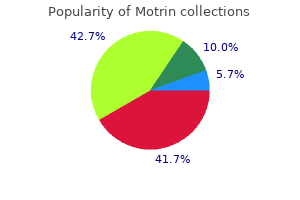
Once stabilized, the articular segment can then be attached to the tibial diaphysis through open or minimally invasive plating (or external fixation). Fracture Reduction Exposure the lateral Kocher approach is used, although the dissection is typically facilitated by the rent in the brachioradialis that leads directly to the lateral condyle. The screws are then incorporated in the cement mantle of the acetabular component. If metal augments are used on the revision femoral component, an intramedullary rod extension should be attached to the revision femoral component to achieve initial implant stability. The segmental arteries and veins originate from the aorta and vena cava, respectively, and traverse the vertebral body. A Positioning For fractures and deformities of the tibia and femur, the patient is placed in the semilateral position with an axillary roll and a long, padded posterior roll near the edge of the radiolucent table. Often the articular surface can be first reduced and the distal aspect then reduced into the base. The templated size should be used as a guide; intraoperatively, an increase or decrease in cup diameter may be found to be appropriate. The orientation of the displaced radial head must be confirmed to ensure that the articular surface of the fragment is not flipped 180 degrees. Finally, external fixation rods are added, connecting the calcaneal pin to both the medial, midfoot rod and either tibial half-pin for increased frame rigidity and possibly to distract the subtalar joint. Once cup verification has been finished, the pelvic reference array, bone fixator, and two pins are removed, and femoral preparation proceeds. The strength of the quadriceps and hamstring muscles should be assessed and documented using a five-point scale. Correction of the wrist deformity in diaphyseal aclasis by stapling: report of a case. High-quality cancellous bone remains in the femoral canal following this preparation. If too aggressive, it can lead to injury to the epiphyseal region, leading to growth problems in the ulna. Approach Distal femoral physeal separations will generally be managed by closed reduction and percutaneous fixation. Approach the surgical approach is minimally invasive, directly over the physis, at the apex of the deformity. A lateral post is used during the arthroscopy portion of the procedure and can be lowered during the open osteotomy portion. Once these flaps are raised and the digits separated, the flaps are easily rotated and reapproximated adjacent to the new nail plates, recreating a paronychial fold. The long calcaneal pin has terrific mechanical advantage with traction to the torn posterior capsule of the ankle. Hyperflexion, external rotation, and anterior dislocation of the knee facilitates access to the posterior aspect of the tibial component. The transverse angulation of the pedicles is directed medially, increasing gradually from L1 to L5. Incision for open reduction and internal fixation is made laterally over the anterior compartment, and the skin can then be mobilized to gain access to the fracture site. Management of this injury component is essential to avoid iatrogenic surgical complications. Towel clips should be avoided around the groin as they interfere with fluoroscopic visualization of the hip. This method is typically coupled with external fixation for the tibia fracture after limited open articular reconstruction. Because of the triangular shape of the proximal tibia, the millimeter reading of the posterior tine will be greater than that of the anterior tine if the osteotomy is in the proper sagittal plane alignment.
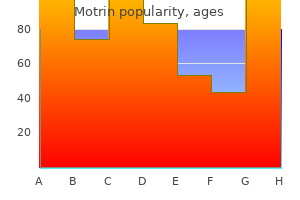
This neurologic disorder causes hypertonia (commonly spasticity), impaired motor control, and weakness. Mixture of local anesthetic and epinephrine being injected along the course of incision. Hip abduction: In a normal hip, abduction should be more than 60 degrees and symmetric. Partial injuries (sprains) occur as a result of lower energy and are more common with axial load and plantarflexion, such as in competitive sports. Anterior and Posterior Chamfer Cuts Anterior and posterior chamfer cuts are essential for the prosthesis to fit over the distal femur. There may be concomitant limb-length discrepancy with both true and apparent foreshortening of the involved limb. We do not routinely remove hardware unless symptomatic or specifically requested by the patient, in which case the implants may be removed at 1 year after surgery. Preoperative measurements from plain films provide a reliable guide for the length and width needed. Clinical and radiographic assessment of a modular cementless ingrowth femoral stem system for revision hip arthroplasty. Apparent ankle varus may occur secondary to disorders such as hindfoot varus as seen in Charcot-Marie-Tooth disease, residual clubfoot, or fixed forefoot valgus. A 4-mm external fixation half-pin is advanced through the posterior tuberosity of the calcaneus, in line with the long axis of the bone, to the subchondral surface of the anterior process of the calcaneus. The proximal-fit prosthesis usually requires a starter reamer, which is used as a canal-finder. After the femur is externally rotated, adducted, and extended, it can be prepared. Bending the end of the nails will cause undue irritation of the skin and soft tissue. The hole in the synovium is closed longitudinally with absorbable suture, leaving the patella with the quadriceps and patellar attachments extra-articular. The clamps can also be adjusted by adding a half or full "sandwich" to the clamps to raise the pin insertion site more anteriorly. The incision is carried down to the epicondylar ridge with the triceps posterior and the extensor carpi radialis longus anterior. In fixed deformities, positioning of the head can be difficult for the anesthesiologist. The surgeon piecemeals the remaining excess posterior aspect of the discoid with arthroscopic biters and shaver. Pedicles at the ends of a construct need to be competent Screws do not line up well to accept rod If there is a structural breach, the surgeon can skip a level as long as it is not at the end of the construct. Low-virulence organisms (eg, coagulase-negative Staphylococcus) may present with chronic pain, whereas more virulent organisms (eg, Staphylococcus aureus) or hosts that are immunocompromised may present with more obvious signs of infection. If a previous acetabular component is in place, the stability and positioning of the component are scrutinized. These particles generate histiocytic and macrophage response, where intercellular signaling pathways are activated that promote osteoclast activity and bone resorption. Sirkin et al13 retrospectively analyzed a staged protocol for management of 56 C-type plafond fractures treated using a protocol of immediate (within 24 hours) stabilization of the fibula fracture with temporary spanning external fixation of the tibia across the ankle joint. A thorough examination will include the prone rectus femoris test (also known as the Duncan-Ely test).
True Chamomile (German Chamomile). Motrin.
Source: http://www.rxlist.com/script/main/art.asp?articlekey=96914
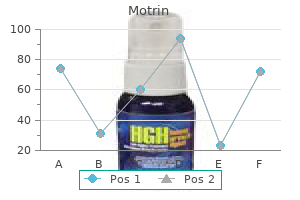
The cast is applied in one section and is carefully molded to maintain the position achieved with stretching and to avoid skin sores. All acetabuli, especially Paprosky type 3B defects, should be tested for pelvic discontinuity. Owing to the limited dissection, prolonged postoperative stiffness is a rare event. Iliopsoas contracture does not occur during the lengthening because the distraction site is distal to the psoas insertion. A strong cantilever force can be created to correct pelvic obliquity by using two sagittally contoured rods fixed to S-hooks positioned against the sacral ala distracted against the L4 pedicle screws. Regardless of the fracture plane, the principle is to work through the fenestration provided by the medial malleolar osteotomy, using finetipped dental probes, reducing the posterior portion of the body to the anterior body fragments. The blood supply originates from the common iliac arteries, which diverge and descend lateral to the common iliac veins and slightly posterior and medial to the common iliac veins. An anterior midline incision is centered over the patella, using the previous incision. A spica cast is applied with the hip in full extension, neutral abduction, and neutral rotation. Positioning Bernese Periacetabular Osteotomy the patient is positioned supine on a radiolucent table. Anterior osteophytes should be debulked using a burr or an osteotome; this reduces the risk of anterior bony impingement with hip flexion and internal rotation. Posteromedial and posterolateral process fractures lie to each side of the flexor hallucis longus tendon. Contralateral full-length films are helpful for determining length in comminuted fractures. The presence of type I avascular necrosis does not preclude a successful outcome at skeletal maturity, while whole-head avascular necrosis dooms the hip to a poor outcome and leglength discrepancy despite multiple surgical procedures. In some extreme cases such as this, major articular fragments are reconstructed with Kirschner wires, mini-fragment screws, or absorbable pins on the back table. In smaller, thin patients it is possible to grasp the head through the axilla to assist with the reduction. These criteria are not perfect, and large errors arise in estimation of the load-bearing capacity of the bone. Casts applied too tightly or not appropriately split can lead to acute compartment syndrome. In most cases, the goal is to recreate the normal anatomic center of rotation, although changing the center of rotation by up to 10 mm may be accepted for the sake of optimal component fixation. Vertebral anomalies cause scoliosis by an imbalance in bone growth, whether an increase on a side associated with a hemivertebrae, or retardation on the side associated with a vertebral bar. For instance, farm-related injuries may alter the treatment regimen for the patient. The central part of the physis does not require treatment because it will close spontaneously. Many children have tendon transfers as young as 7 years old; with continued skeletal growth, they may have recurrent deformity. Anticipate more bone loss than that seen on radiographs and prepare for the worst-case scenario. Labral disease commonly involves this region of the acetabular rim and often includes a degenerative, intraarticular tear with an intact capsular attachment. This allows ease of exposure posterior to the muscle belly of the vastus lateralis. Additional bone can be removed easily after femoral preparation using either the sagittal saw or the calcar planar. As the child gets older and heavier, ankle plantarflexor insufficiency (due to muscle weakness and foot segmental malalignment) will eventually occur. Guidelines for treatment of nondisplaced femoral neck fractures are beyond the scope of this chapter. Meticulous and secure draping technique is important to reduce the risk of infection. The tendon is rerouted to the radial aspect of the Lister tubercle and passed subcutaneously around the abductor pollicis longus and extensor pollicis brevis tendon.
The antalgic gait is a result of pain in all phases of ambulation with weight bearing and is characterized by a shortened stance phase indicating hip-joint disease. Medial and lateral stab incisions are made at the superior border of the patella to release the quadriceps and retinaculum. The axillary nerve lies in the deltoid muscle 5 cm (in an adult, less in a child) from the tip of the acromion laterally. Cut the anterior process of the calcaneus to reduce the anterior prominence and skin tension. Health and behavior modifications, including patient education, physical therapy, weight loss, and knee braces, can result in improvement of knee pain and function. No study has shown a Tegner Activity Score greater than 4 with total knee arthroplasty or unicompartmental knee arthroplasty. Axial load of the forearm combined with valgus force can also propagate a fracture through the lateral condyle. Half-Pin Insertion Hydroxyapatite-coated half-pins are recommended, because they achieve better fixation and are associated with lower rates of infection and loosening. A washer may be used to provide a wide surface area of fixation and prevent screw head migration. Rett Syndrome this is an X-linked disorder that affects females almost exclusively. The screws are passed posteromedially and posterolaterally around the tibial component using the triangular cross section of the proximal tibia. The patient must have been prepared in advance for a possible conversion to a total knee arthroplasty if not all the criteria are met. The sciatic nerve may also be compressed under the tendon of the gluteus maximus during surgery if the hip is maintained in severe flexion and internal rotation. If no bony reduction keys are visible along the medial talar neck, due to comminution, the mini-lamina spreader is inserted in the fracture medially while the surgeon patiently reduces the medial talar neck alignment. In a classic review by Lindsay and Dewar, only 17% of patients had no foot symptoms with long-term follow-up. It can occur as a secondary lesion associated with giant cell tumor, osteoblastoma, chondroblastoma, or fibrous dysplasia. The stem should then be inserted through the sleeve and it should engage the sleeve as they are finally seated together. The epicondylar axis is used to ensure appropriate external rotation of the femur. Complicated syndactyly refers to the interposition of accessory phalanges or abnormal bones between digits. Pain usually is located in the groin but may be located in the medial thigh, buttock, or the medial knee. Physical therapy is rarely needed for range of motion in the preadolescent population as daily activity with walking often suffices to restore function. Excessive bone removal during the offset procedure should be avoided, although a resection of less than 30% of the neck diameter does not weaken the femoral neck. Similarly, missed acute hematogenous infections, which are now chronic infections, present with a history of sudden deterioration in hip function, without other obvious causes. Therefore, it is helpful to have an assistant hold the thumb in a vertical position to allow easier centering of the incision over the flexor sheath. Paralysis: Poliomyelitis and cerebral palsy as well as other nervous system afflictions in children typically result in shortening on the more affected side. Cutting the male nail approximately 1 cm above the top of the female nail rarely causes persistent symptoms and allows for more growth. Posterior capsular contracture can result from the imbalance between spastic or contracted hamstrings and knee extensor dysfunction (often associated with patella alta). These injuries are treated acutely in well-padded, compressive dressings with posterior splints and non-weight bearing. Normal or even abnormal external foot progression angle may be present in the face of increased femoral anteversion when it is accompanied by excessive external tibial torsion. Tibial lengthening may cause knee or ankle subluxation and progressive equinus deformity of the foot. I perform a proximal fibular epiphysiodesis in addition to the proximal tibial epiphysiodesis if the final discrepancy between the tibia and fibula is anticipated to be more than 1 cm. Injury to the sural nerve or saphenous vein is possible but uncommon and carries few long-term deficits.
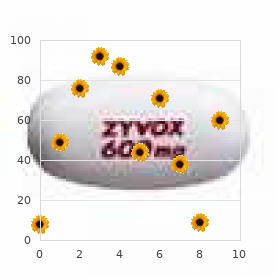
The patient is placed with a gel roll longitudinally under the right thorax, elevating the right hemipelvis. The choice of intramedullary devices for the femur and tibia in osteogenesis imperfecta. The manipulation should be performed using a short-lever arm with the patient completely relaxed until a firm endpoint is reached. The lateral cortex is transected through the osteotomy, but the lateral periosteum and soft tissues are left attached to the elevated segment to act as a "hinge," allowing eversion of the extensor mechanism. The screw could not be removed, necessitating a corrective opening wedge osteotomy (through the screw). Once the soft tissue guide has been seated on the near cortex, the clamp bolt is tightened to prevent loss of alignment. Detecting and treating hip flexion deformity as well as rectus femoris spasticity and contracture (simultaneous rectus femoris transfer) have been helpful, but this finding seems to be common with surgical intervention at this age. Gluteus medius lurch: Trunk lean over the stance phase leg signifies a positive test, which is a nonspecific sign of hip pathology caused by dislocation, coxa vara, or painful hip conditions. With Mersilene sutures there is a reduced risk of cutting out in thin bone of poor quality. A rotating arc is selected that will allow for correction of coexisting rotational deformity or rotation inadvertantly caused by misplacement of the fixator. Pain with supine log-rolling of the hip is the most specific test for intra-articular pathology. Additional contraindications include lack of cooperation on the part of the patient, vascular insufficiency that may prevent healing, and the presence of significant medical comorbidities precluding administration of anesthesia. Once the hip is reduced, two nonabsorbable sutures are placed in the capsular flap. As the talus continues to compress the calcaneus, the lateral half of the posterior facet is impacted into the body of the calcaneus, with the recoil producing a step-off in the posterior facet. The older the child is at the time of reduction, the more likely an osteotomy will be necessary. Low-grade isthmic spondylolisthesis rarely progresses and can be followed with serial radiographs at 6-month intervals until the patient is skeletally mature. The malorientation test is applied to the ankle and hip to determine whether these joints are oriented normally to the mechanical axis line. Distraction gap, percent of femur lengthened, external fixation time index, degree of preservation of knee motion, result score, and complications were compared among the groups. Once within the new tissue, the metastatic cell releases mediators such as tumor angiogenesis factor, inducing neovascularization, which, in turn, facilitates growth of the metastatic focus. The distally excised bone block is impacted into the original tibial tubercle site. Reduction and stabilization of the syndesmosis is achieved with a clamp placed across the distal tibiofibular joint and a bump placed under the leg. If the anterior and posterior cuts are not bicortical, then the fragment may not displace adequately. The Salter innominate osteotomy: should it be combined with concurrent open reduction Role of innominate osteotomy in the treatment of congenital dislocation and subluxation of the hip in the older child. After completion of femoral preparation and determination of the size of best-fit broach, trial components are inserted, and the stability of the hip is examined. The medial collateral ligament also may be detached or functionally incompetent (ie, pseudo-laxity) as a result of bony deficiency. Half-pins placed in the anterior half of the femoral diaphysis can result in a fracture either during the lengthening process or after frame removal. Neurologic monitoring leads are placed cranially, on the intercostal and abdominal musculature, and on all four extremities. The femoral corticotomy is completed following the same principles discussed earlier. Lateral hamstrings lengthening is indicated only for teenagers with a severe crouch gait pattern whose popliteal angle measurement fails to improve adequately after lengthening of the medial hamstring muscles. It is often helpful to think about pushing down on the proximal end of the shaft to correct the angulation while maintaining abduction to correct the varus. The tip is not driven perpendicular to the axis of the body, because it may perforate the dome of the acetabulum. Positioning A radiolucent table is used in case an intraoperative radiograph will be obtained.
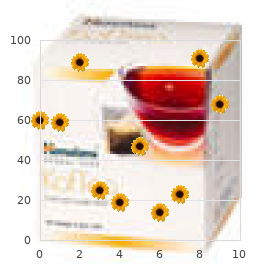
The term "congenital trigger thumb" is a misnomer, as it has yet to be detected at birth in several large series prospectively examining a combined 14,581 newborns in three countries. Anterior radiograph shows the screws are lateral to the midline as the fracture is more lateral. Growth in height is decreased during the early stages but returns to normal after healing. New anterior instrumentation for the management of thoracolumbar and lumbar scoliosis: application of the Kaneda two-rod system. Regenerate bone failure is prevented by slowing the distraction rate when signs of poor regenerate formation are present. This injury commonly occurs in the younger age group, particularly in those with open growth plates. Minimally invasive plating techniques avoid a large dissection and leave the soft tissues intact, allowing rapid "biologic healing. Next, a medial-to-lateral 4-mm half-pin is advanced across the dense subchondral distal tibia bicortically. Femoral neck fractures in young patients typically are the result of high-energy mechanisms. Recent data evaluating the surgical timing of talus fractures maintain that the time to surgery does not correlate with outcome. The anterior longitudinal ligament, which runs on the anterior aspect of the vertebral body, is a strong fibrous tissue that is contiguous throughout the spine. Short Intramedullary Fusion Rods Short intramedullary fusion rods are rods that couple at the knee arthrodesis site. The sciatic nerve is the major nerve most commonly at risk during the posterolateral approach to the hip. When the ulna is lengthened, the cordlike portion of the interosseous membrane tends to pull the radius distally. The posterior cortex fracture is usually fairly simple and can be used to gauge reduction. Use of a longer guidewire can help to avoid capturing the guidewire in the reamer. Once repaired, it should not be possible to dislocate the hip anteriorly, posteriorly, or laterally. The foot must be held in neutral flexion and mediolateral angulation as the rod is passed. Unstable injuries should be treated in a well-molded shortleg cast and checked on a weekly basis to ensure continued mortise reduction. Reversal of the radial head during reduction of fracture of the neck of the radius in children. Identification and protection of the superficial peroneal nerve within the anterior flap. The incision is placed obliquely over the anterior aspect of the hip and is centered about 2 cm below the anterior superior iliac spine. Injury forces precipitating fractures of the dome of the talus are universally severe, causing articular displacement, and are an indication for surgery. Percutaneous quadriceps resection A long-leg plaster cast with the knee flexed at least 90 degrees is applied at the end of the procedure and worn for 4 to 6 weeks. A running 0 absorbable suture then can be sutured over the imbrication to help reinforce the imbrication as well as lower its profile. Lumbar Spine Anatomy the lumbar vertebral facets are more sagittally oriented in comparison to thoracic vertebral facets. The osteotomy should be assessed with the elbow extended after closing the osteotomy. Autograft typically is taken from the iliac crest (ie, tricortical iliac crest graft) Allograft combines tricortical iliac crest with croutons for medullary packing. The perichondral ring of La Croix is a transitional area between the articular cartilage and the periosteum of the diaphysis, which is perichondrium and retains the potential for producing cartilage and bone. The sacral lamina and lateral processes can be completely removed if they are severely prominent. One patient had a loss of 5 degrees of hyperextension, but all other patients had recovery of full range of motion.
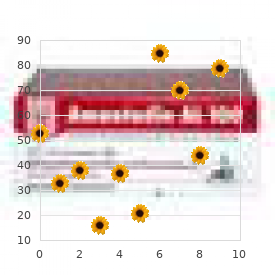
A recent study19 challenging the need for precautions was performed at a center where the anterolateral approach is used. An axial load to the femur as in a fall from height or a motor vehicle accident may result in hip fracture. Routine screening for hip dysplasia in neuromuscular conditions with radiographs is widely performed. The additional stress placed on the adjacent vertebrae below the level of fusion may result in instability with time. I have found this technique rarely necessary, but it does avoid the issue of pin management (see below). Complete preoperative neurologic and vascular examination is performed and documented. As the drill guide is moved, the angle values are updated dynamically, indicating how far varus or valgus, anteverted or retroverted the implant is compared to the planned values. Plagiocephaly and facial asymmetry may be present early on; they increase with time. If there is friction during the drop-leg test, the hinge and knee rotation axis needs to be examined and adjusted. A trial stem is inserted into the tibial canal in proper alignment, bone graft is impacted around the stem, and when the bone graft has filled the defect, the stem is removed. No genetic defect has been identified, and no common teratogen is linked to fibular deficiency. Patients with an acute traumatic patella dislocation often present to the emergency room with a history of a noncontact or contact injury to their knee, and many do not recognize the injury as a patellar dislocation. Femoral component seating Use a custom-made femoral trial before insertion of the real component and check the relation (gap) between the lower peripheral margin of the trial and the distal rim of the femoral head when the trial is fully seated. Aspirate from the knee joint should be evaluated by synovial fluid analysis, Gram stain, culture, and antibiotics sensitivity. The size of the bone screw depends on the size of the patient, the tibia at the level of screw insertion, and the size of the arc chosen. If the half-pin insertion is not perpendicular to the bone, a post and half-pin fixation bolt are utilized. Chapter 10 Revision Total Hip Arthroplasty With Acetabular Bone Loss: Antiprotrusio Cage Matthew S. Recent data challenge the value of polyethylene pegs, demonstrating an association with radiographic evidence of loosening. To minimize risk of iatrogenic injury to the ulnar nerve, the elbow is extended to 20 to 30 degrees of flexion before the pins are inserted medially. Conversely, a cut that is too high causes an oversized femoral component and overstuffing of the patellofemoral articulation, which can subsequently cause patellar maltracking or limit range of flexion. Femoral shortening across the fracture site is best visualized with a lateral femur radiograph before traction is applied. In these situations, brief postoperative cast immobilization is recommended until skin flaps have healed. Cemented socket templating accounts for a 2-mm cement mantle in approximating the reamed hemispherical cavity. The stability of the graft is tested by attempting to pull the graft from the osteotomy site with a Kocher clamp. These fractures can be treated percutaneously if anatomic reduction can be attained by closed treatment; however, a small incision can easily allow direct visualization of the reduction. The lateral femoral cutaneous nerve is better protected when retracted medially with the sartorius muscle. These findings are consistent with an arrest of the normal endochondral growth mechanism. In patients who have external fixation and for whom fusion is initiated at the time of the infection eradication surgery, bone grafting is performed at a second surgical setting. The pertinent physical examination findings in the walking child (the timeframe when this operation is typically performed) are listed below. The thumb is pronated relative to the plane of the hand when the hand and thumb are held flat, making it easy to make the skin incision too radial with respect to the flexor sheath when the hand is held in this position for the surgery.